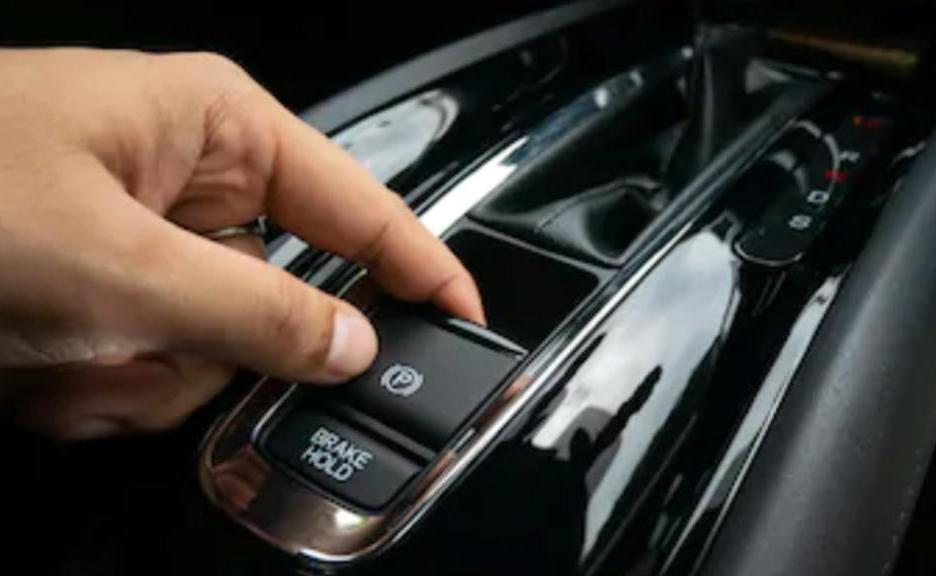Electric parking brake: Advantages and Disadvantages
The electric parking brake or EPB is a device that replaces the manual parking brake lever operated by the left foot. The first electric parking brake was released to the market by the manufacturer ZF TRW in 2001 and was first used on the Lancia Thesis. Brands like Mercedes Benz or Hyundai already include it in some of their vehicles.
Types of electric handbrake
The electronic parking brake can be operated manually, through a key located on the dashboard or in the vehicle’s center console, or automatically, according to the criteria programmed by the vehicle manufacturer. Depending on the system that the device uses to send the lock signal to the brake mechanism, we distinguish the following variants:
- Electric parking brake with cable drive. The electric actuator sends a tension signal to the parking brake cables (Bowden cables).
- Electric handbrake with actuation by servo motors. The system avoids the use of Bowden cables, it has two servo motors located on the rear axle coupled to each brake caliper. Currently, it is the most widely used mechanism in vehicles equipped with EPB. Its main advantage is that it balances the wear of the rear brake pads.
Components and function of the electric parking brake
All components of the electric parking brake system are linked to each other via the CAN (controller area network), a communications protocol developed by Bosch that is used by most manufacturers. These are the main components that intervene in the operation of the EPB:
- EPB actuation button. It is the device through which you can manually activate and deactivate the EPB.
- EPB control unit. It receives the EPB drive signal (manual or automatic) and processes it to send the information to the brake system.
- ABS Brake unit (anti-lock braking system). This unit allows safe and efficient braking. It receives information from different vehicle units (wheel sensors, brake pedal switch, ECU (engine control unit), traction controls, power steering, etc.) and processes it to adjust and achieve the optimal level of braking.
- Sensors (clutch and accelerator). These send information to the other components for processing.
- Bowden Cable. Component used in electric brake systems with cable drive. These are in charge of applying the brakes.
- Servomotors. Actuators that drive the plunger to actuate the brake calipers.
- Rear brake calipers. These act by pressing or releasing the brake pad on the disc depending on the information received from the ABS unit.
How to Maintaining Electric Parking Brake
When a fault occurs in the braking system, the corresponding warning light in the instrument cluster comes on. On some vehicles, a legend may be read indicating the system fault, for example: parking brake fault, faulty brake system, etc. In case of a breakdown of the braking mechanism, it is recommended that a specialized technician be in charge of unlocking the device on the rear wheels.
In each periodic maintenance of the vehicle, it is essential to verify the correct condition and cleanliness of the drive cables of the brake, the pads, and check for any leakage of the brake fluid and ensure the correct operation of the pliers. Both the calipers and pistons must be properly lubricated.
See Also: Keep Your Car Running Well With Good Maintenance
There is a possibility that the electric parking brake system may not come into operation due to receiving inadequate voltage (high or low). This situation is due to a bad condition of the battery. It is essential to certify its optimal condition to ensure that all electronic devices in the vehicle work with the correct voltage.
Advantages of the Electric Parking Brake
- This type of device takes up less space in the passenger compartment due to the lack of a lever and offers more creative and futuristic interior designs.
- Although we forget to set the parking brake, this system acts automatically when the engine is turned off, so it will always be thrown when we get out of the car.
- If the engine is running and we want to set the parking brake, just press the button and it will be thrown.
- If with the engine running and the electric parking brake applied, when you enter a speed and accelerate, the system automatically switches it off.
- It has a hill start aid, since the electric parking brake is activated for a few seconds when the vehicle recognizes that it is on a steep road.
- It offers greater safety in emergency braking, preventing the car from skidding and allowing greater control over it.
Disadvantages of the Electric Parking Brake
On the other hand, the electric parking brake system also has some drawbacks such as the following:
- Breakdowns are more complex and expensive than if the system is manual or mechanical.
- If the car battery goes down, we must know how to act to unlock or lock the system without battery.
- If we run out of brakes, in order to activate it, we must press the button several times in order to activate it and brake the vehicle progressively.
- The drive is not progressive and cannot be adjusted as if it were with a mechanical drive and a lever, in which the driver can tighten more or less.
- Diagnostic equipment is needed to replace the brake pads, since the brake cylinders that are electrically operated for the handbrake must be retracted.
An EPB system offers the user safety and comfort advantages over a manual brake system. The confidence that this device brings to the driver has made it a key element in constant development by different manufacturers.
